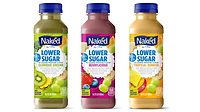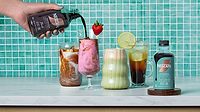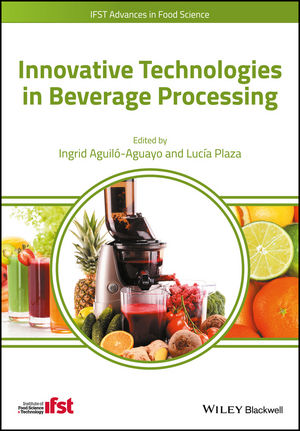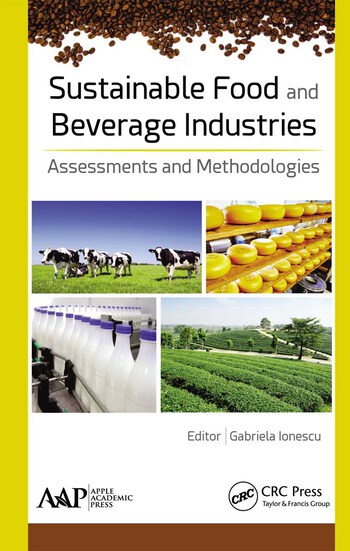Beverage R&D
Beverage-makers turn to clean label, non-GMO ingredients to meet consumer trends
Consumer knowledge prompts further interest in clean label beverages

Image courtesy of Remedy Drinks
The late, great singer and actress Olivia Newton-John, is quoted for once having said: “Family, nature and health all go together.” With such growing awareness of the connections between individual health and that of nature or the environment, experts note that these interests are prompting more consumers to seek out clean label and non-GMO beverages.
“A few different factors are shaping consumers’ interest in these products,” says Amanda Greenlee, fruit and vegetable specialties buyer and sustainability coordinator at Global Organics, Cambridge, Mass. “First, the pandemic made many people more conscious of their health and what they’re putting in their bodies.
“Also, people are becoming more and more aware of and concerned about climate change, and are starting to look at how their consumption choices are helping or hurting the planet, which has prompted some interest in non-GMO and clean label in general,” Greenlee continues.
Alice Lee, technical marketing manager at Dallas-based GNT USA, notes that although interest in clean label and non-GMO isn’t new, consumers’ growing knowledge has only helped further the interest in these products.
“In the digital era, consumers have become far more knowledgeable about which ingredients are healthy, natural and sustainable,” she says. “The pandemic has also made many people much more conscious about what they eat and drink.”
Nina Riggins, marketing director for beverages of North America at Beloit, Wis.-based Kerry, echoes similar sentiments, noting that the pandemic brought the importance of functional benefits to the forefront for many consumers.
“[Consumers] want benefits like stress support, immune health support, digestive health and energy support from their everyday food and beverages,” she explains. “In our Kerry functional research late last year, we found 79% of consumers who prioritized functional and fortified products also researched the ingredients that went into them.
“Not only do they want the benefits called out on the label, but they also want those benefits to come from ingredients they know and trust,” she continues.
Suited for all categories
As functional beverages are benefiting from clean label and non-GMO trends, experts highlight the various beverage categories that also can benefit from these trends.
GNT’s Lee points out that as more consumers seek out health benefits from their drinks, brands are reinventing the clean label definition.

Image courtesy of Ritual Zero Proof
“Consumers are seeking out proactive health benefits, from aiding gut health via probiotic drinks and kombuchas to smoothies and juices with vitamin fortification to build immunity. There’s also a whole new category of emerging beverages focused on mood-enhancing claims that help you feel calm or improve your mental focus,” Lee explains. “With all these beverage categories, you have new brands reinventing the clean label definition.
“A great example is the energy drink category, where new brands are claiming attention by calling out plant and botanical extracts such as yerba mate as functional ingredients,” Lee continues. “It’s not just about adding a health halo, though — it’s also important not to undermine products’ health credentials with artificial and unhealthy ingredients.”
Andrew Martino, category manager for sugar and sweeteners at Global Organics, notes that where sugar content has become a concern for consumers, all beverage categories can benefit from clean label trends.
“For example, we see organic sugar used in almost all beverage categories: dairy, lemonade, iced tea, kombucha, alcoholic, protein and even energy drinks,” he says.
Global Organics’ Greenlee adds that one of the biggest trends witnessed this year is healthier versions of sugary drinks like soda and sports drinks.
“Lots of consumers want to indulge in a treat like a can of soda without all the corn syrup and artificial sweeteners,” she says. “There’s a lot of demand for cleaner-label soft drinks with recognizable ingredients and natural flavors.
“Another is non-alcoholic spirits and cocktails,” Greenlee continues.” Health conscious consumers are becoming more mindful of how much alcohol they’re consuming, and many are choosing clean-label mocktails over alcoholic options.”
Jennifer Zhou, global director, product marketing at ADM, Chicago, notes that although juice is a category that has been scrutinized for its high sugar content, consumers still gravitate to this beverage type, especially functional juices for perceived naturalness and clean label appeal.
“Similarly, the flavored and enhanced water category (both still and sparkling) has seen growth given consumers’ demand for hydration support from beverages that also have simplified product labels,” she says.
Solutions that meet consumer demand
As beverage-makers continue striving to include recognizable ingredients rather than artificial sweeteners and flavors, experts highlight various ingredient solutions that help meet consumers’ growing demand for clean label.
Global Organics’ Martino suggests looking for solutions that keep the ingredients simple.
“This may sound overly obvious, but to reduce the amount of sugars in a beverage, instead of taking down some arcane non-nutritive sweetener, try reformulating with less sugar,” he says. “We have had several clients that have done a simple sugar reduction in their products, and sales have gone up.

Image courtesy of Ruby
“There is a growing group of consumers that are watching their sugar intake carefully, and are willing to tolerate (or even prefer) products that are less sweet,” he continues.
Global Organics’ Greenlee points to coconut ingredients, like coconut milk and coconut water, as an excellent way to add nutritional value to a beverage while keeping the label clean.
“Coconut water, for example, is packed with electrolytes and has a light sweetness, which makes it a perfect addition to a clean-label functional beverage or sports drink,” she explains. “Another ingredient that works well in clean-label beverages like kombucha is our cold-pressed organic ginger juice. It’s incredibly flavorful and really packs a spicy punch while also adding lots of nutritional value.”
GNT’s Lee points to plant-based color concentrates made from non-GMO fruit, vegetables and plants that use physical processing methods.
The natural coloration of edible crops such as carrots, sweet potato, turmeric and spirulina, offer instant reassurance to consumers, Lee says.
“In the UK and EU, an orange shade might be described simply as ‘concentrates (carrot and apple),’” she explains. “In the U.S., the same product can be listed as ‘fruit and vegetable juice (color).’
“Our EXBERRY portfolio contains more than 400 plant-based concentrates spanning the whole rainbow and they can be used in almost any application, including CSDs, juice drinks and smoothies, alcoholic beverages, enhanced waters, powdered beverages, milk drinks and protein shakes,” Lee continues.
As flavors and colors derived from natural sources are essential to the clean label equation, ADM’s Zhou points to the company’s Corefold flavor technology.
“To meet [consumers] expectations, we leverage our new Corefold flavor technology,” Zhou explains. “It applies a novel approach to concentration, focusing on the core part of citrus oil to emphasize the molecules responsible for both impact and mouthfeel, while capturing the top notes for freshness and aroma.
“The new technology gives beverage manufacturers an edge in creating bold, fruity and refreshing citrus experiences with flavors like Sicilian lemon, blood orange, pink grapefruit and key lime,” she continues.
Zhou also calls attention to ADM’s Colors from Nature portfolio, as fruits, vegetables and botanicals are the foundation of these solutions.
“From these sources, we create a rainbow of stable color solutions derived from natural sources, supporting both clean label targets, as well as overcoming a full range of beverage formulation hurdles, from pH instability to solubility, color interactions, shelf-life limits and more,” Zhou says. “Plus, research finds the inclusion of botanicals would encourage consumers to drink beverages like functional juice/water, carbonated fruit beverages and still soft drinks more frequently.
“Edible florals such as hibiscus, rose, lavender, purple passionflower and pansies can provide a level of sophistication and romance,” she continues. “Further, trending bottled versions of cafe drinks are featuring botanical flavors like matcha lattes and turmeric-infused golden milk. The fresh green taste of jalapeños, celery and kale is also sprouting up in cocktails, smoothies and juices.”
Sugar reduction the natural way
Although consumers are increasingly looking for natural, recognizable ingredients on labels, when it comes to consumers’ concerns about added sugar, experts note that beverages are one of the most scrutinized products.
Noting that brands are transitioning to sweetening solutions derived from natural sources to help address these concerns and meet clean label targets, Zhou points to ADM’s portfolio of sweeteners including two newer additions, SweetRight Stevia Edge-M and SweetRight agave.
“Notably, SweetRight agave offers organic, naturally sourced sweetness for beverages, helping support clean label demands,” she says. “With a sweetening potency 25-30% higher than sucrose, and with less input required to achieve the same sweetness level, our agave can also support highly sought-after sugar and calorie reduction targets.
“Additionally, SweetRight Stevia Edge-M is isolated directly from the stevia leaf, which sets it apart from other rebaudioside (Reb) M options on the market produced by fermentation or bioconversion,” Zhou continues. “As a result, it can be listed as ‘stevia leaf extract’ on product labels, which is recognizable to many consumers examining ingredients included in their beverage options.”
Carla Saunders, senior marketing manager for high-intensity sweeteners at Cargill, Wayzata, Minn., notes that, as brands aim to keep artificial ingredients like Ace-K, sucralose and aspartame off ingredient statements, Cargill fields the most requests around sweeteners.
“That’s why zero-calorie sweeteners like stevia continue to make significant gains,” Saunders says. “Dramatic improvements to next-generation stevia products, combined with consumers’ greater familiarity with the ingredient, have opened the door to a new wave of label-friendly, reduced-sugar beverage formulations.
“Our ViaTech stevia leaf extract portfolio is designed to deliver significant improvements in sweetness quality compared to traditional stevia leaf extracts, providing more versatility in reformulation,” she continues. “The portfolio includes options tailored for specific applications, including dairy, tea and juice. ViaTech’s improved sweetness and flavor dynamics allow for sugar reductions of up to 70% in a wide range of applications.”
For the deepest sugar reductions, Saunders recommends Cargill’s EverSweet, which accesses the best tasting parts of the stevia leaf, Reb M and Reb D.
“While rare in the stevia plant, Cargill produces them via fermentation, creating a cost-efficient, great-tasting sweeter, produced in a sustainable manner,” she explains. “It has such a clean, sugar-like taste, and in many beverage applications, enables up to 100% sugar reduction.”
Meeting consumer targets
As there’s no formal definition of clean label, while vague, it can be a challenge to both consumers and beverage manufacturers to interpret exactly what clean label means.
“Clean label has now evolved from ingredient information to a holistic look at the product — which ingredients are being used, how premium those ingredients are, what benefits they can provide, etc.,” Kerry’s Riggins says. “Overall, consumers are expecting more from their everyday beverages, whether it’s a can of flavored seltzer or a meal replacement shake.”
As clean label isn’t a one-size-fits-all strategy, Cargill’s Saunders notes that one point of contention is that there are certain categories that consumers view as an indulgence and clean label is less of a consideration. “For other categories, however, clean-label ingredients are a cost-of-entry,” she says.
“Consumers don’t have the same expectations for carbonated soft drinks as they do for a nutritional supplement beverage,” Saunders explains. “Brands need to recognize those differences, specific to the category and the consumer segment target. We also see differences in how ingredients are perceived by different consumer segments.
“The bottom line; not every product has to be clean label, and not every consumer segment has the same definition of what is ― and is not ― acceptable,” she concludes.
Looking for a reprint of this article?
From high-res PDFs to custom plaques, order your copy today!









